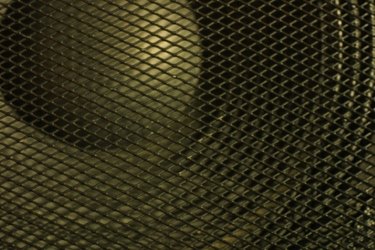
Car audio and home audio speakers look similar but have slight design goal differences. However, given the overall system or speaker design, it is possible to interchange the woofers and tweeters in most home- and car-designed systems. Although many of the major differences between home and car audio speakers are cosmetic, important factors exist to address the environments these speakers are typically used in.
Impedance
Video of the Day
Impedance is one of the key differences between home and car speakers. Impedance is a measurement that defines how much opposition a conductive item gives to an electrical current. Car amplifiers are typically low-voltage, high-amperage designs, making 4 ohm speakers ideal. In the home, where the opposite relationship between amperage and voltage is the case, 8 ohm speakers are typical. Although the speakers are interchangeable between home and car environments, it is rare to find a car speaker above 4 ohms. High end, esoteric, larger home speakers can be as low as 4 ohms, but these tend to be rare given the larger strain placed on amplifiers and receivers.
Video of the Day
Design
Car speakers are typically sold as raw drivers. Automotive component sets are essentially the same thing as what you would find in a bookshelf home speaker, with a separate woofer and tweeter. Joining the two are crossovers, encased for increased cosmetic appeal in car audio kits. Home speakers encase these components in cabinets, sold in a variety of finishes and shapes.
Optimization
Most car speakers are optimized for use in small enclosures, in small spaces. These two properties help define the typical car audio environment. This is referred to as "near-field" design, and is similar to the concept behind studio monitors. Home speakers, in general, are ideally suited for a variety of room sizes, with their ability to play in larger spaces more a function of amplifier power than overall design. Automotive speaker designers recognize that cars have what is known as transfer function -- small environments reinforce low frequencies.
Cosmetics
Many car audio speaker designers, especially in the realm of subwoofers, make enormous effort to make the drivers as high tech and cosmetically different as possible. Unlike home speakers, where the drivers' baskets are rarely viewed, car speakers are examined front and back for design cues that exude power and quality. Additionally, flashier colors and chromed baskets, with the occasional addition of flashing lights, are common among many brands of car speakers. Home speakers are generally designed to work in with existing furniture and interior design elements, blending into existing decor.